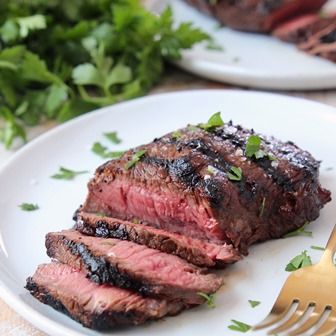
Love meat tender? That’s tough luck, because most SA beef is chewy, scientists find.
Finding a consistent supply of tender steak in South Africa is tough, but your best bet is to choose a product with a label that claims it is well aged.
That’s one of the key findings from the first audit of steak bought in supermarkets and butcheries, which comes with a health warning for the beef industry: inconsistent quality will reduce consumption.
A paper reporting the survey’s results says: “Variation and lack of consistency in tenderness for most of the products suggests that critical control points for good eating quality are poorly understood, ignored or half-heartedly applied by the various role-players in the industry.”
Only about 40% of beef loin cuts tested were tender enough to meet the retail quality standard, and only 20% were of restaurant quality, experts from the universities of the Free State and Stellenbosch report in the journal Meat Science.
Higher price is no guarantee of greater tenderness, they say, and in general steak from supermarkets tends to outperform butcheries.
The scientists, whose work was supported by the industry-funded organisation Red Meat Research and Development South Africa, bought 420 beef loin samples of 21 products. They shopped 20 times over 10 months at nine butcheries and four supermarkets in Pretoria.
The products were labelled porterhouse steak, sirloin and scotch fillet, and in some outlets they were club steaks or T-bone steaks with the bone still present. All the tests were performed on the longissimus lumborum muscle only.
Half the samples were categorised as fresh, which meant they were butchered on demand, pre-packed in styrofoam trays wrapped in cling film or displayed uncovered in trays behind a counter. The rest were vacuum-packed.
Only one passed all the retail tests
Cattle that supplied the meat were young – probably less than 18 months – and grain-fed. The exception was the single free-range product, where the cattle were between one and three years old, and not grain-fed. This product was the only one to pass the retail-quality tenderness test every time, and it missed the restaurant-quality benchmark only once.
The scientists subjected the steak to a battery of tests which also covered physical composition, colour of the raw meat and fat, amount of ageing and fat percentage.
Tests for tenderness and cooking loss were performed after the meat was broiled at 260°C until the internal temperature reached 70°C, then allowed to cool to 18°C.
In their paper, lecturer Lize van Wyngaard and Prof Arno Hugo from the department of animal science at UFS and Prof Phillip Strydom from the department of animal sciences at Stellenbosch, say the average amount of fat that could be cut off the meat ranged between 18% and 29%.
“The variation was not only a function of the thickness of the subcutaneous fat layer, but also of the way the porterhouse cut was processed and trimmed,” they say.
More than 70% of South Africans prioritise appearance, colour and freshness when buying beef, according to a 2015 study, and the new survey found that 20 of the 21 samples could “probably be considered as acceptable in colour”.
The exception was the single frozen product, which had a reduced capacity to regain its bright, natural colour – or “bloom” – when exposed to oxygen.
The fresh and vacuum-packed samples lost between 25% and 28% of their weight during cooking, and the frozen product lost 30%. “It is interesting to note that purchasing cuts over the counter coincided with lower cooking loss,” says the paper. The free-range steak was the only vacuum-packed sample to record a lower cooking loss.
Tenderness is tested by a device that measures the Newtons – or units of force – required to cut through the meat, and the lowest score – indicating the tenderest meat - was recorded for the free-range meat.
Same product, different tenderness
“Only five products were on average suitable for ‘food service’ (restaurants),” says the paper, and another five had an excellent chance of being suitable for retail, or at least “slightly tender”. All 20 samples bought at one butcher were tough.
“Another disturbing observation is the large differences [in tenderness] between two consecutive product purchases, which imply that a consumer may have a very good and very bad eating experience when buying the same product in a short period of time,” says the paper.
In one case, a vacuum-packed product bought at a supermarket was the second tenderest in one set of tests but near the top of the toughness scale in the next. “Inconsistency is a huge problem in the South African retail market.”
Although tender products tended to cost more, this was not always true and “results on tenderness and price show that when buyers base their choice on price, they should experience good eating quality in some but not all cases”.
Duration of ageing is probably the most important factor for final tenderness, say the scientists, and any perception that vacuum-packing implies better eating quality does not seem to be true. “Eight out of 13 vacuum-packed products recorded [tenderness] values above the ‘food service’ threshold and four were above the ‘retail service’ threshold.”
However, “considering tenderness as the quality indicator, supermarkets tend to perform better than butcheries, in particular when products were labelled with quality claims”.
News Category
- International retailers
- On the move
- Awards and achievements
- Legislation
- Wine and liquor
- Africa
- Going green
- Supplier news
- Research tools
- Retailer trading results
- Supply chain
- Innovation and technology
- Economic factors
- Crime and security
- Store Openings
- Marketing and Promotions
- Social Responsibility
- Brand Press Office
Related Articles

Checkers Sixty60 wipes floor with Pick n Pay As...

Top tips for consumers to combat escalating ele...

Clear winner in South African retail battle

Drinks survey reveals Rooibos as a top choice a...


